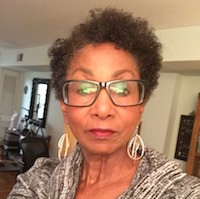When I first started practicing Yoga I was a card-carrying blippy (black hippy). I lived in the heart of hippydom outside of the Bay Area—Santa Cruz, California—in a communal house with six other people. I only knew one other black person living in Santa Cruz during that time.
Two things happened in 1976, which was the year I moved to Santa Cruz: I taught myself Yoga and became a vegetarian.
I got used to my family and friends calling me “crunchy granola” back then. Yes, they thought I was weird when I moved to Santa Cruz, weirder still when I became a vegetarian and practically certifiable when I started practicing Yoga. Now nearly four decades later I’m still doing Yoga and still a vegetarian—and I feel like I still live in Santa Cruz in 1976 given the mostly monochromatic nature of the people who make up the “Yoga community” in the United States.
In 1976 almost no one of any color did Yoga. I taught myself Yoga using Richard Hittleman’s Yoga 28 Day Exercise Plan. I honestly don’t know why I started. I saw the book—a paperback with a blond white woman on the cover, in a bookstore. No Yoga clothes back then. She was wearing the same leotard and tights she would have worn in a ballet class. Her hair was styled in a bouffant, heavily hair sprayed flip.
She looked more like June Cleaver (I’m not sure who reading this is old enough to know who June Cleaver is but you can Google her) than the barefoot, free style, make-up free image that later came to represent the typical Yogini.
There were no Yoga studios back then. I took my first class at Cabrillo College at eight-thirty in the morning with—get this—the football team. Yes, Santa Cruz was so unorthodox back then, that the football team practiced Yoga. The only women in the class were the teacher and me. A year or so later the local YWCA offered a Yoga class. There were no props—not even Yoga mats. This time the students were all women and all white.
Around 1982 I began to study meditation and Yoga philosophy with a renowned meditation master. In 1996 I took my first class in a Yoga studio after practicing mostly on my own for 20 years. When Sun and Moon Yoga Studio opened in 1995 I was ready to merge philosophy with asana. This is also when I began to look the part—with toe rings and Om symbol jewelry and yes—Yoga clothes. Not trendy, tight fitting, fat shaming, expensive attire—but stretchy, breathable, look good on any body Yoga clothes.
For all the years I took classes, studied and taught at Sun and Moon, the dearth of Yoga students who were anything other than white was a thorn in my side. In 2003 I opened my own studio and nothing much changed. I had more black students than Sun and Moon, to be sure. I even had a few Indian and Hispanic students. But not many given that my studio was located in a much more racially diverse neighborhood than Sun and Moon.
According to a 2012 Yoga Journal study, 1 in 15 Americans practice yoga and four fifths of them are white. So what, in 2015, are the reasons for this? The other 20% makes up all other ethnic groups combined.
As a 67-year-old, very fit and black Yogini I must say that I am turned off by the photos of skinny young white women that have become the most prominent image of the people who practice Yoga. The major commercial Yoga magazines are all complicit in this racially, age and weight biased image. I’ve been reading the major Yoga magazine long enough to remember when that wasn’t the case. I remember when the Yogis on the cover or inside weren’t always white, women, young or skinny.
The bottom line is that to this day, I am still almost always the only non-white person in any Yoga class or Yoga workshop that I attend. At the same time I am torn about aligning myself with the fledgling Black Yoga community. For me, Yoga is about oneness. So identifying my Yoga community by color goes against everything I believe in. On the other hand when I connect with black Yogis like Dianne Bondy and follow websites like Decolonizing Yoga I do feel a connection I don’t always have with the mainstream Yoga community. Therein lies a perfect dilemma.
~
Author: Gayle Fleming
Editor: Alli Sarazen
Photo: Natalie/Flickr











Read 12 comments and reply